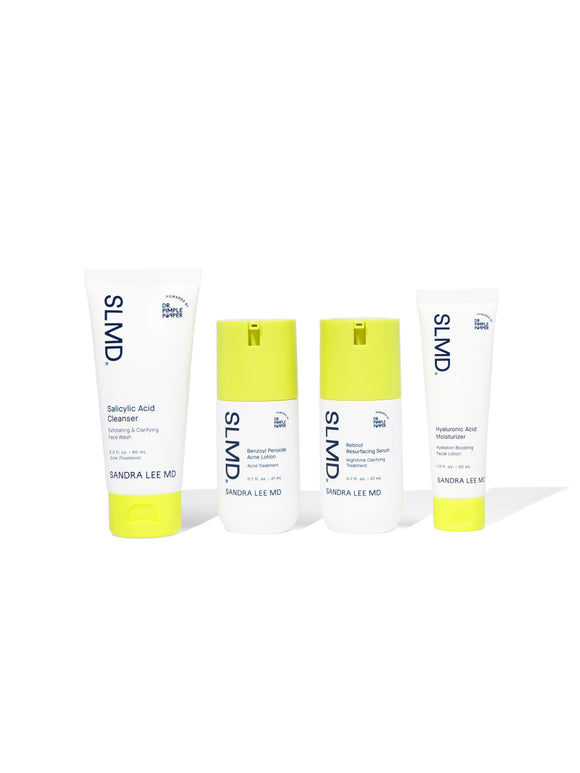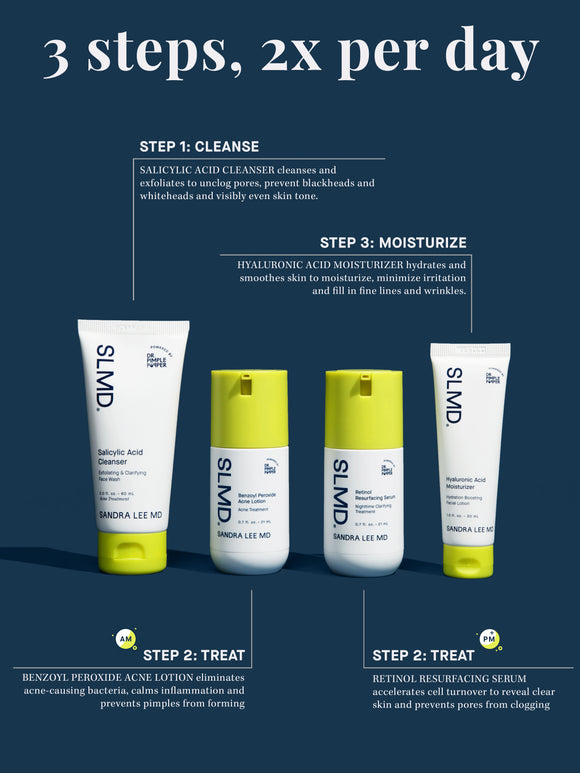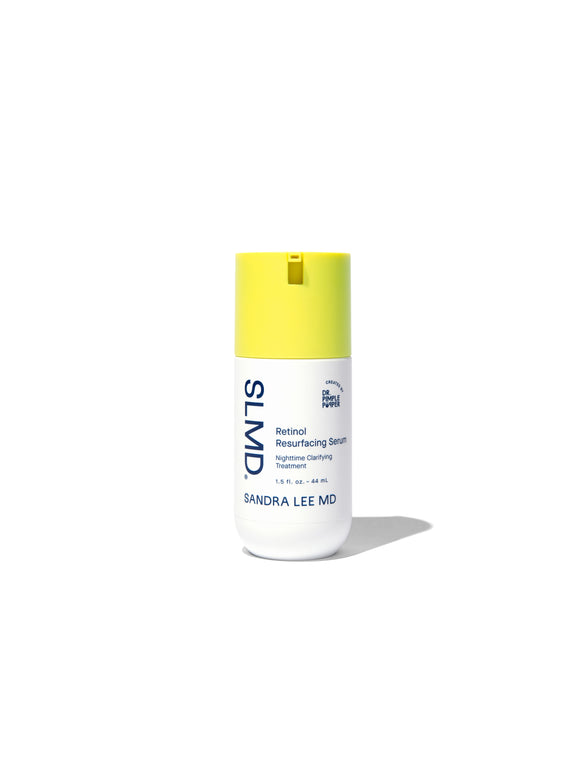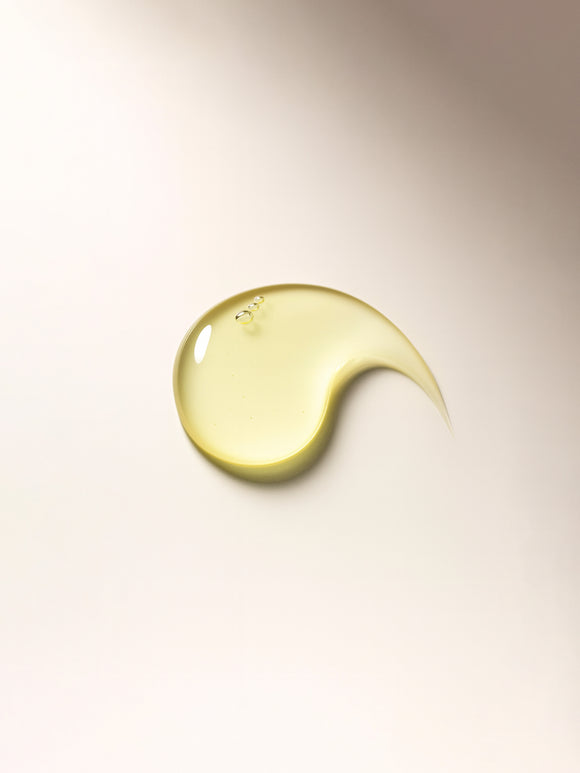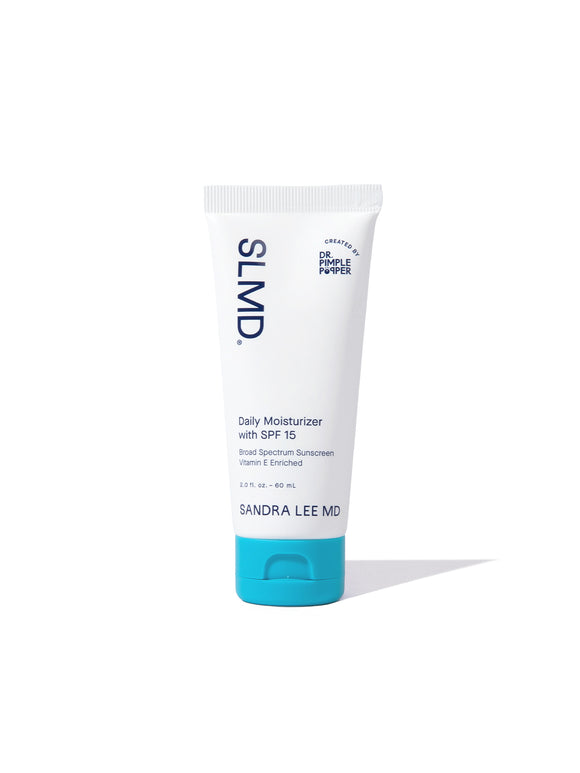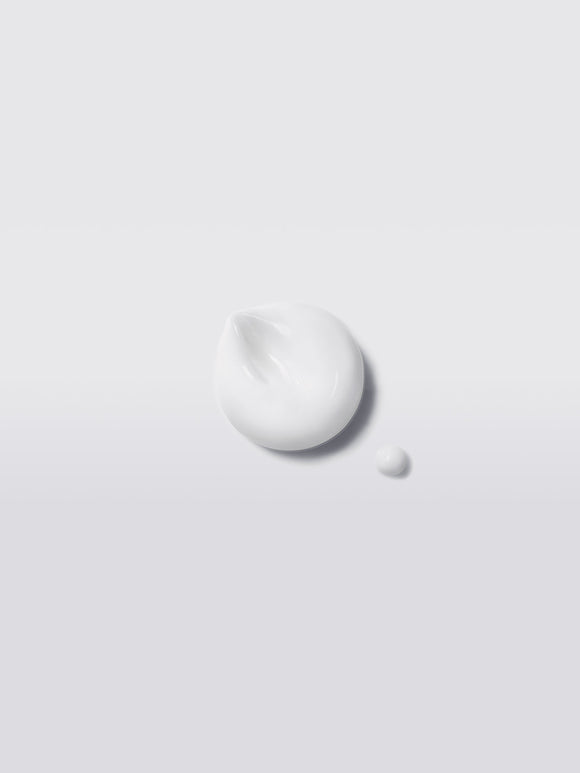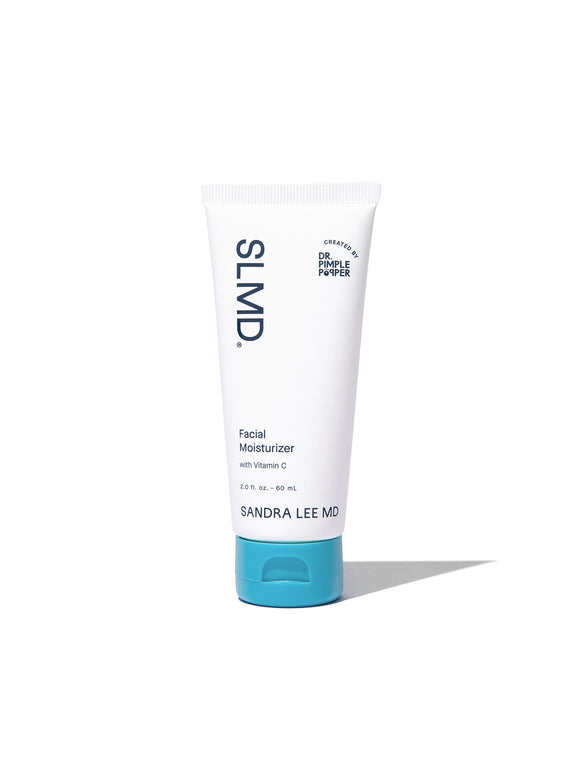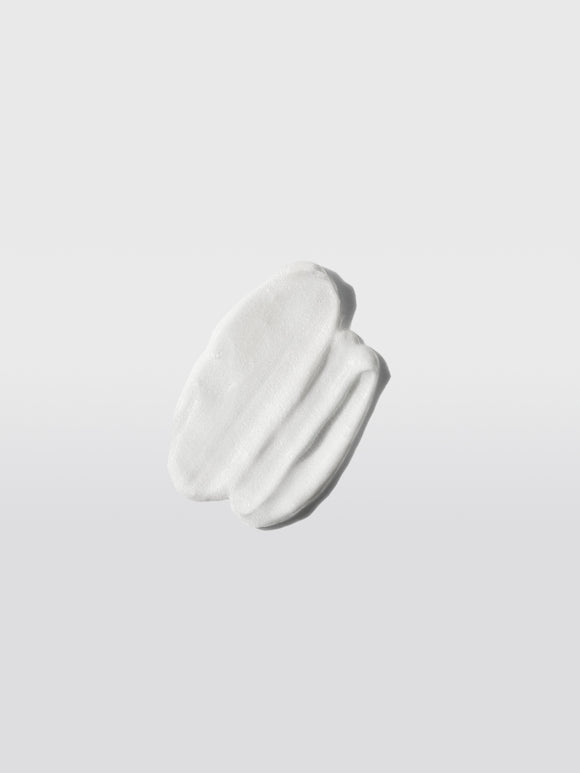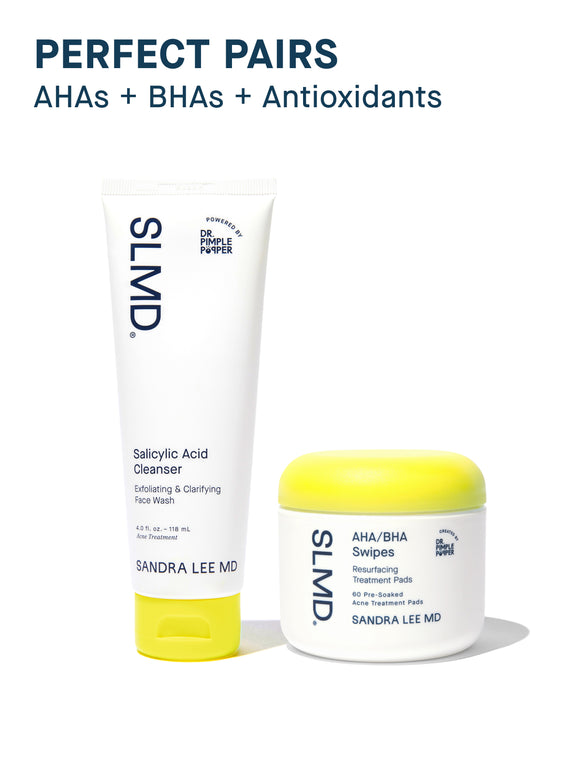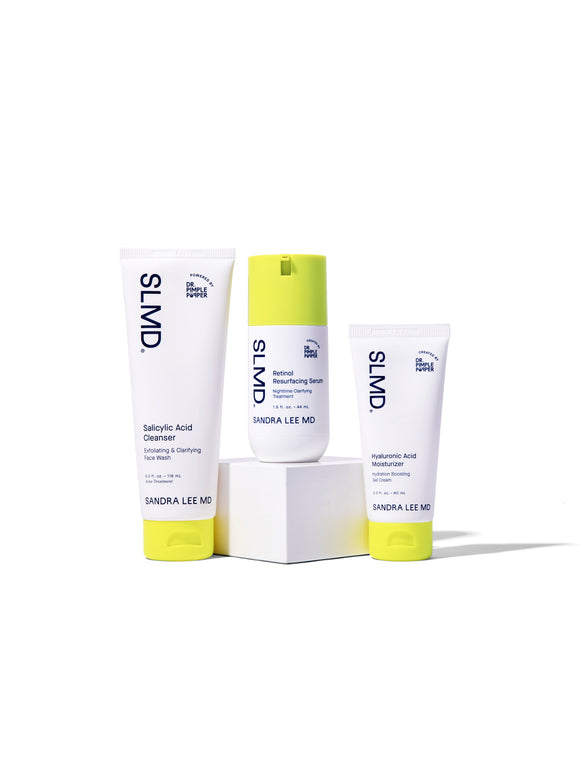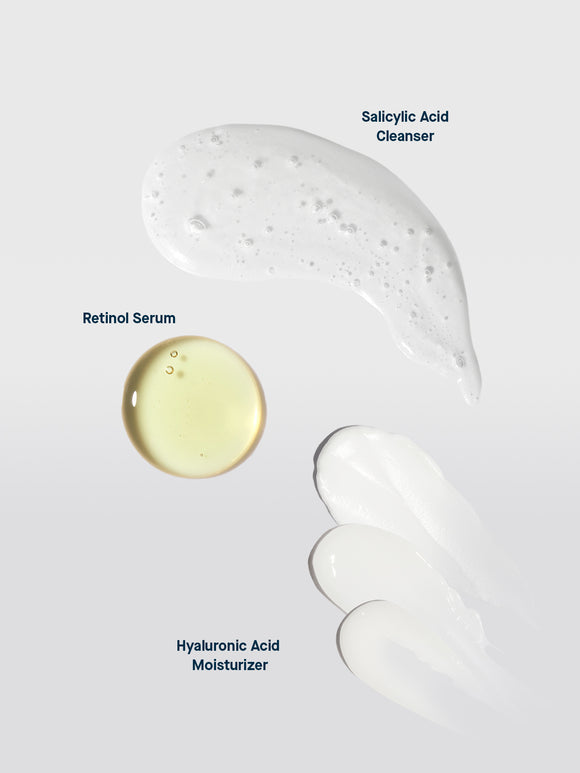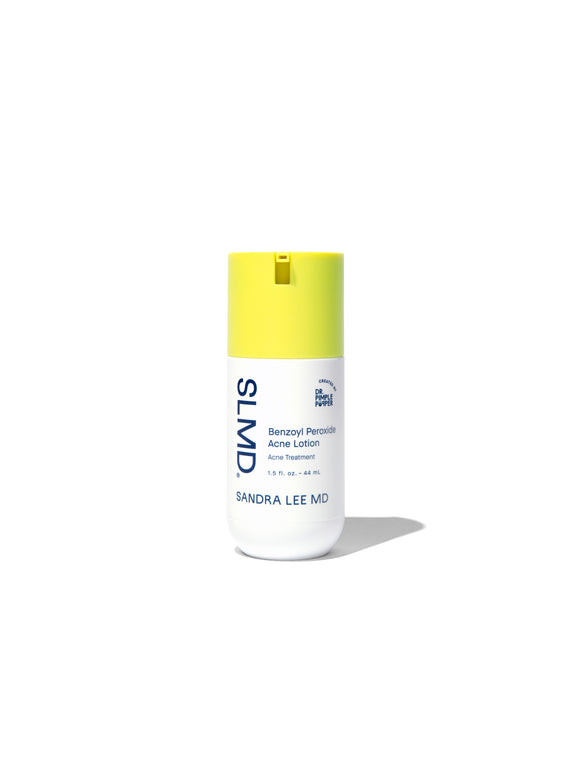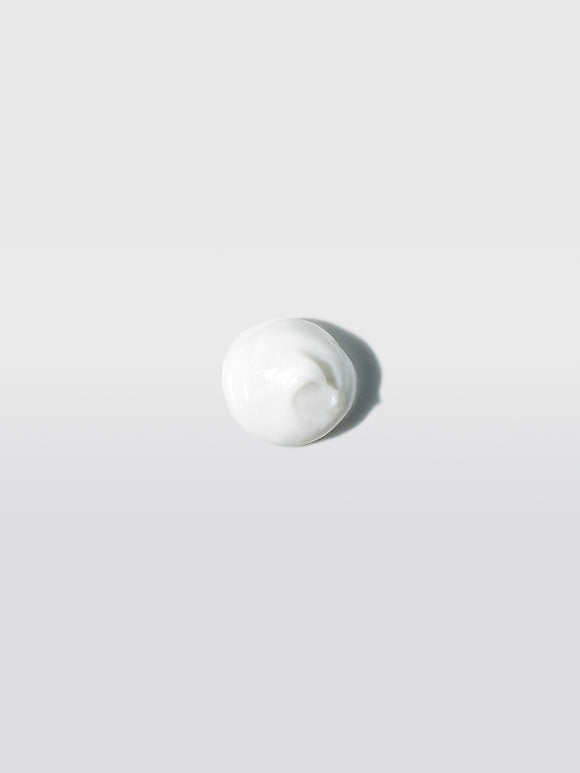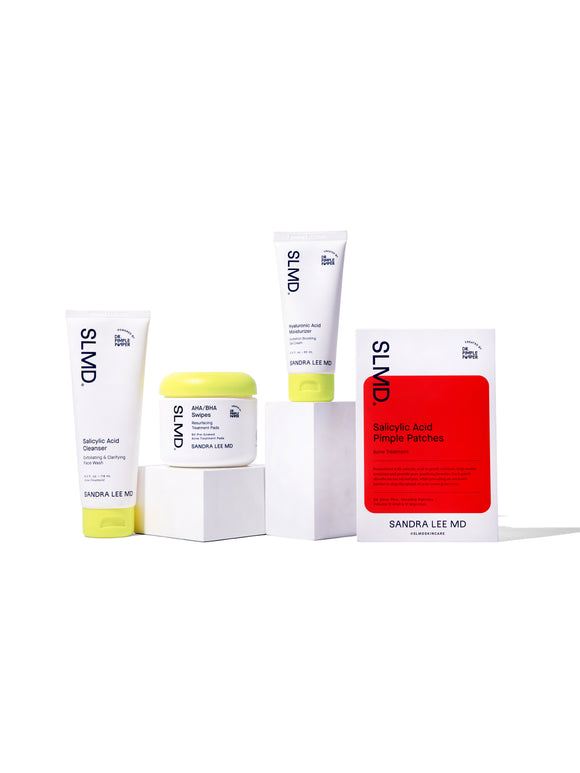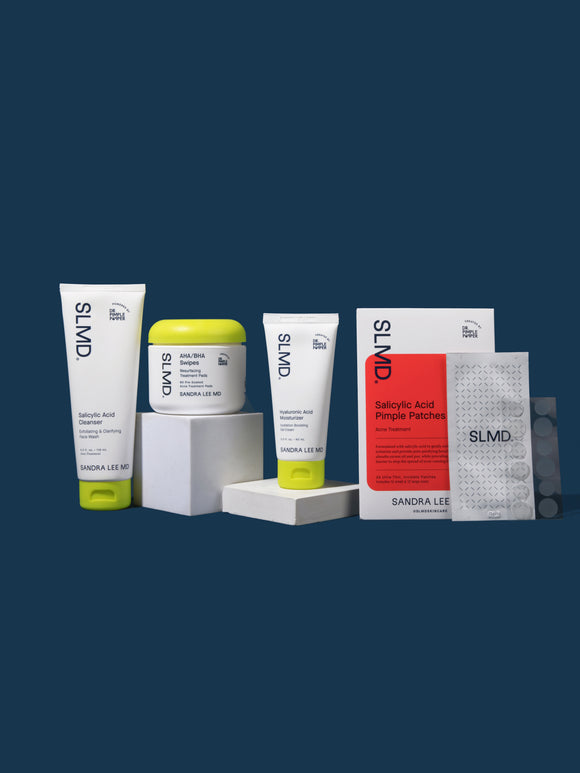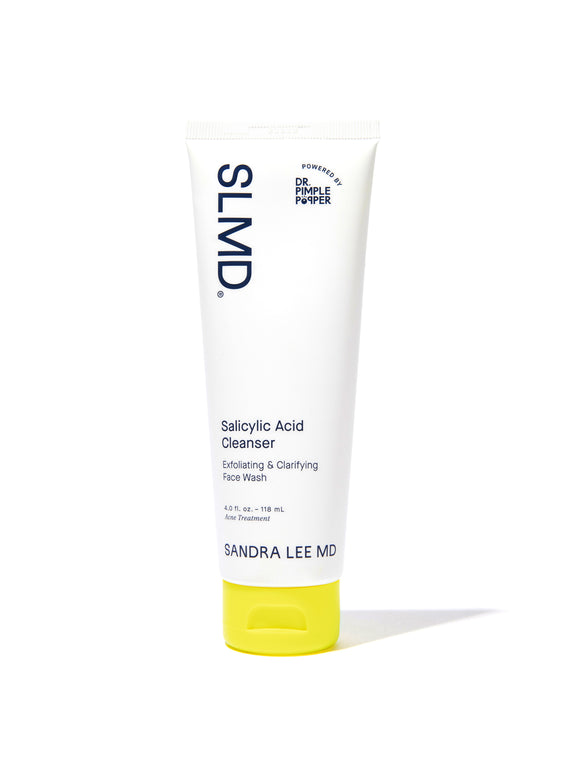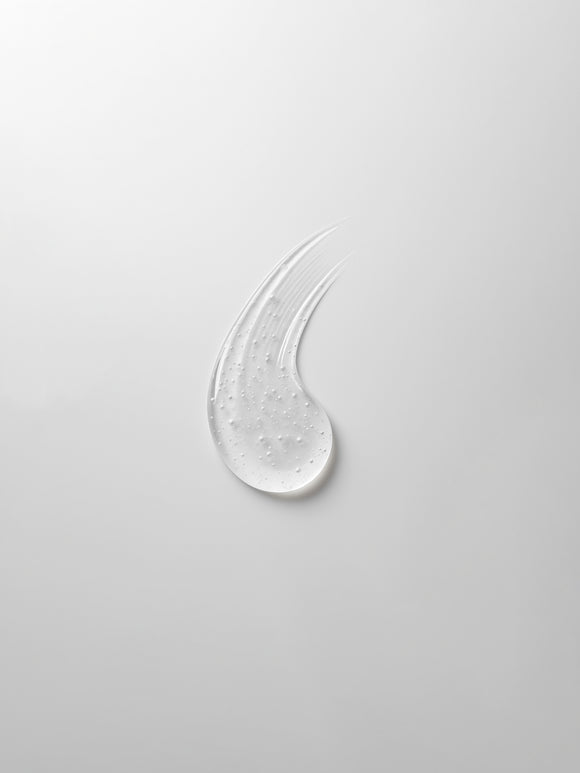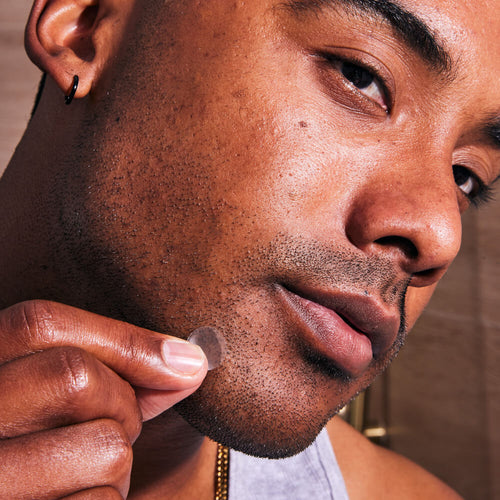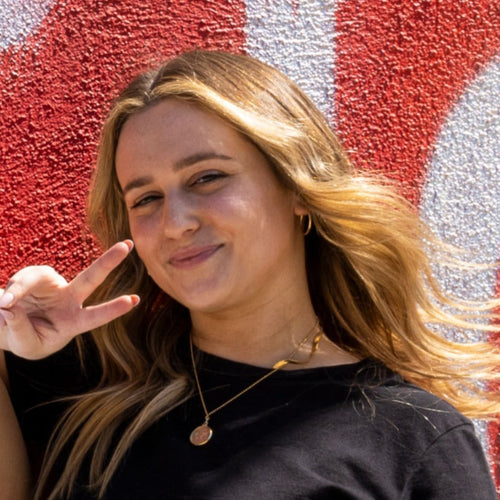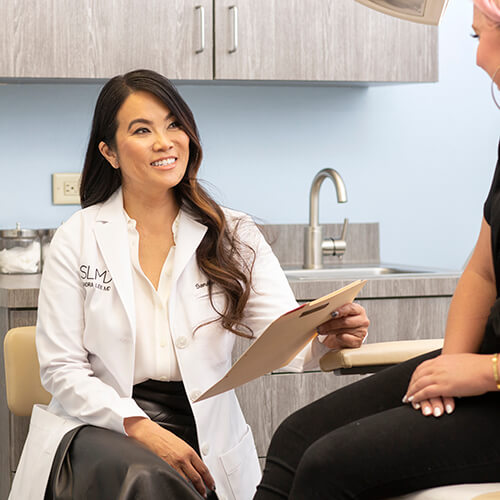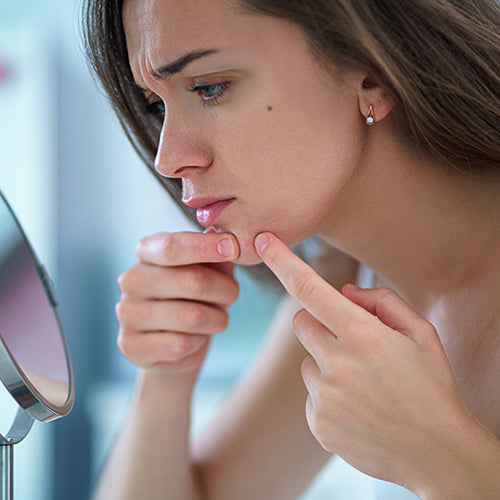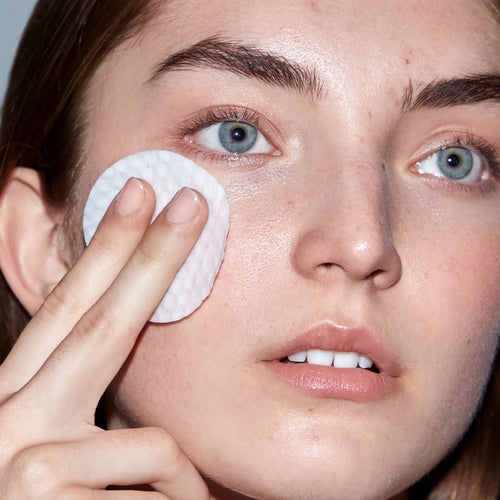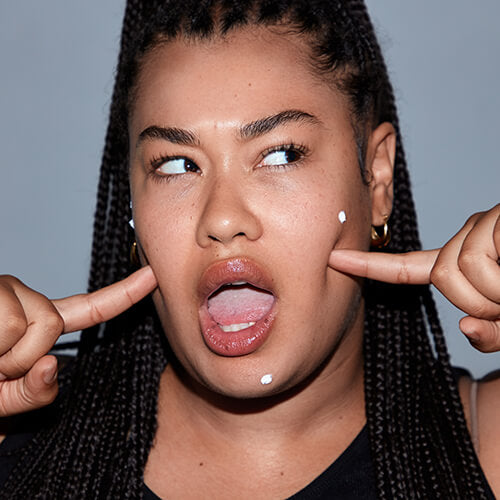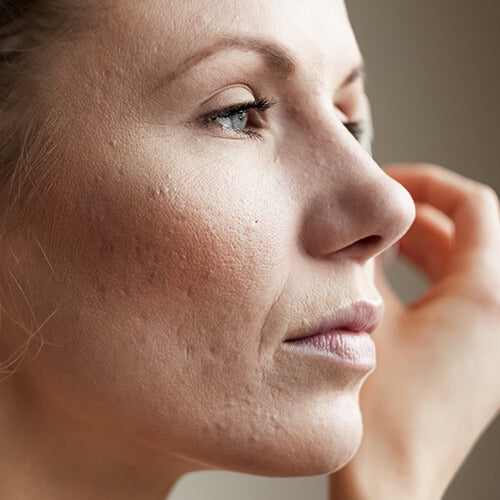
How to Treat Acne and Aging Skin Together: Dr. Pimple Popper’s Guide
Yes, you can treat breakouts and fine lines — here’s how to balance your skincare routine.
Published:
4 minute read
Adult acne is on the rise — and many people are now managing breakouts and fine lines at the same time. The problem? Acne treatments can be drying and irritating, while well-aging products often clog pores and trigger even more breakouts.
So how do you balance both? We asked dermatologist and SLMD Skincare founder Sandra Lee, MD (aka Dr. Pimple Popper) how to treat acne and signs of aging with one smart, skin-friendly routine.
So how do you handle adult acne and aging at the same time? We asked Sandra Lee, M.D. (aka Dr. Pimple Popper) for her advice.
Article Quick Links
Why oily, acne-prone skin ages differently
There’s a silver lining to oily, acne-prone skin: it often shows signs of aging more slowly than dry or sensitive skin. That’s thanks to sebum, the skin’s natural oil, which offers some surprising protective benefits.
Sebum contains:
- Antioxidants that defend against oxidative stress
- Lipids that lock in moisture and reinforce the skin barrier
- Natural antimicrobials that help protect against environmental damage
These properties may help slow both intrinsic aging (driven by time and genetics) and extrinsic aging (caused by sun exposure, pollution, and other external stressors).
Interestingly, a twin study found that people who had acne tended to have longer telomeres — the protective ends of chromosomes that shorten with age. Though more research is needed, experts believe this is likely related to the biology behind oil production, rather than acne itself.
How to treat acne and aging at the same time
Trying to manage acne and aging simultaneously means walking a tightrope — especially when acne is still active.
Dr. Pimple Popper tip: "Don’t try to treat everything at once. Focus on calming breakouts first — then build in ingredients that support skin renewal without clogging pores," says Dr. Lee.
Start with an acne-focused routine:
- Use a system that clears pores, calms inflammation, and prevents scarring
- Try: SLMD Acne System , which includes salicylic acid, benzoyl peroxide, and retinol
Once your acne is under control, alternate acne treatments with lightweight, non-comedogenic products that target fine lines, discoloration, and texture. Watch how your skin responds — if breakouts return, scale back temporarily and refocus on acne control.
Dr. Pimple Popper's Acne & Aging Defenses
Best ingredients for acne-prone, aging skin
According to Dr. Lee, certain ingredients can address both breakouts and early signs of aging — without overwhelming your skin.
Retinol
A gold-standard for both acne and aging, retinol supports:
- Collagen and elastin production
- Healthy cell turnover
- Sebum regulation
- Smoother texture and fewer fine lines
Try: SLMD Retinol Resurfacing Serum, formulated for acne-prone skin with added hyaluronic acid for hydration.
Salicylic acid
This beta hydroxy acid is a go-to for oily and combination skin. It:
- Penetrates pores to reduce clogs and inflammation
- Exfoliates to smooth skin and brighten tone
- Helps prevent post-acne marks (PIH) and fine lines
Try: SLMD Salicylic Acid Cleanser for daily use, and SA Acne Spot Treatment for targeted flare-ups.
Glycolic acid
A deeply exfoliating alpha hydroxy acid that: smallest of the alpha hydroxy acids, which means it’s got the strongest penetrating power. It works by loosening the bonds that hold our outermost skin cells together, causing them to shed faster. This makes it ideal for:
- Removes surface-level dead skin cells
- Refines texture
- Fades dark spots and softens fine lines
Try: SLMD AHA/BHA Swipes, which combine glycolic and salicylic acids for dual-action exfoliation.
Niacinamide
This multi-tasking antioxidant (also known as vitamin B3):
- Strengthens the skin barrier
- Reduces oil production
- Calms redness and inflammation
- Helps fade hyperpigmentation
Try: SLMD BP Body Wash, which kills acne-causing bacteria, and AHA/BHA Swipes.
Sunscreen
UV damage is the leading cause of premature aging — and can also worsen inflammation and post-acne hyperpigmentation. But many sunscreens clog pores, so choose one made for acne-prone skin.
Try: SLMD Daily Moisturizer with SPF 15, a 2-in-1 timesaver that locks in moisture and protects skin.
When to see a dermatologist for acne and aging skin
If you’re struggling with:
- Persistent acne that doesn’t respond to OTC products
- Painful cysts, scarring, or hyperpigmentation
- Choosing the right combination of anti-aging and acne ingredients
…it's time to see a dermatologist. They can personalize your treatment plan and help prevent long-term damage.
If breakouts are affecting your confidence, remember — you’re not alone. Adult acne is extremely common, and there are effective ways to manage it.
FAQs about acne and aging
Q: Can I use retinol if I have acne?
A: Yes — retinol is one of the most effective ingredients for both acne and signs of aging.
Q: Will anti-aging creams make my acne worse?
A: Many are too rich or comedogenic. Choose lightweight, non-comedogenic formulas designed for breakout-prone skin.
Q: What’s more important: treating acne or aging first?
A: Treat acne first to avoid inflammation and scarring — then layer in anti-aging products gradually.
Q: Is it true acne-prone skin ages more slowly?
A: It can — largely due to increased oil production and a stronger skin barrier, not acne itself.
Contributing source: Acne and Telomere Length: A New Spectrum between Senescence and Apoptosis Pathways

Dr. Lee's Last Word
It’s absolutely possible to treat acne and support healthy aging — it just takes balance. Focus on consistency, simplicity, and ingredients that work for your skin.



